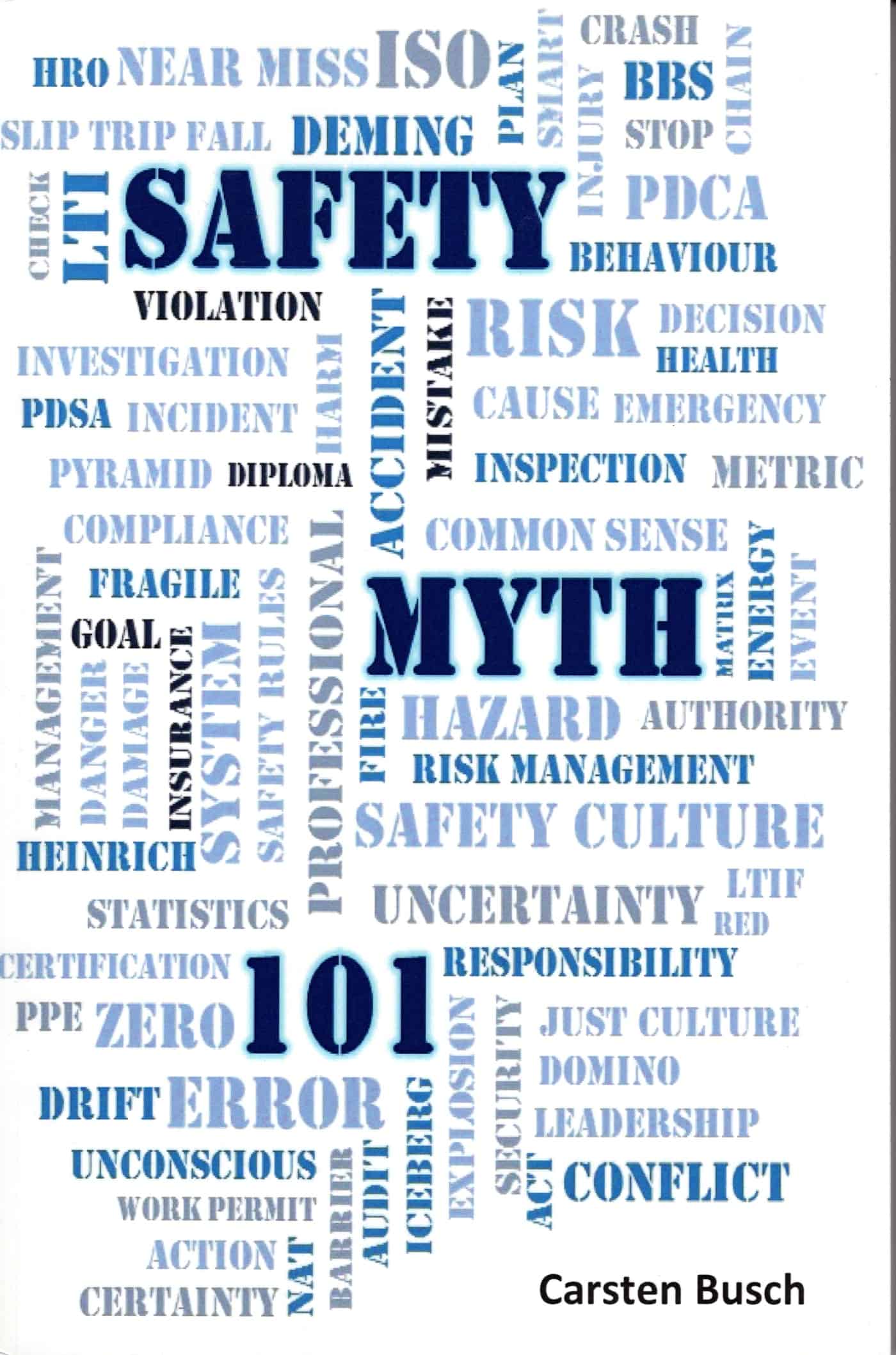Vision of the mistreatment of children in juvenile detention centres in Australia’s Northern Territory was aired on the ABC Four Corners program on 25 June 2016. Within 24 hours, Prime Minister Malcolm Turnbull announced a Royal Commission into juvenile detention. The treatment shown was not new and had been known by the NT Government and Ministers for several years but the quick decision for a Royal Commission shows the political influence of television and current affairs programs. Although not yet written, part of the Royal Commission’s terms of reference should be the investigation of the workplace safety context of juvenile detention centre management and the treatment of the young inmates. Continue reading “Royal Commission into juvenile detention should include OHS”
Category: safety culture
Great safety book let down by the format
 Carsten Busch has self-published “Safety Myth 101” – a book that is one of the most comprehensive discussions on contemporary approaches to occupational health and safety (OHS). But it is also riddled with the problems of many self-published books – the lack of a strong and tough editor, an unattractive presentation and a mess of footnotes, references and endnotes. The content is very good which makes reading this book a frustrating experience.
Carsten Busch has self-published “Safety Myth 101” – a book that is one of the most comprehensive discussions on contemporary approaches to occupational health and safety (OHS). But it is also riddled with the problems of many self-published books – the lack of a strong and tough editor, an unattractive presentation and a mess of footnotes, references and endnotes. The content is very good which makes reading this book a frustrating experience.
I can’t help thinking that the book would have been more effective in a more modern online format that would have allowed for word searches, hyperlinks and interaction with readers. In fact, a wiki may have been the best option for Busch’s very valuable content. But what of this valuable content? Continue reading “Great safety book let down by the format”
When culture has an agenda
The topic of culture is a critical consideration in the improvement of occupational health and safety (OHS). Each company should be aiming for a an active and healthy workplace and safety culture but the term “culture” continues to be difficult to define and poorly understood by the community.
SafetyAtWorkBlog has written about the culture discussion as it relates to
Culture – piss or get off the pot.
Andrew Hopkins has described organisational culture as “the way we as an organisation do things around here”. The sociology of this statement is sound and the occupational health and safety (OHS) context seems to be an accepted element of safety management. But for OHS professionals to continue to advocate the importance of a safety culture it is necessary for them to be aware of how culture is being interpreted and applied elsewhere. The Australian Labor Party recently stated that the Australian banking system needs a Royal Commission because, as Senator Sam Dastyari stated:
“We’ve seen scandal after scandal. We’ve seen failure after failure and we’ve seen a banking sector and a culture develop where effectively these matters are constantly being ignored”.
Gerry Ayers on International Workers Memorial Day
On the evening of 28 April 2016, (Australian time), Professor Mike Behm of North Carolina, Ciaran McAleenan in Ireland and others coordinated an online discussion about the importance of International Workers Memorial Day (IWMD). Dr Gerry Ayers was scheduled to participate but was beaten by technical problems. However he shared his thoughts about the memorial and has allowed SafetyAtWorkBlog to reproduce his thoughts. These are included below: Continue reading “Gerry Ayers on International Workers Memorial Day”
Could safety by algorithms be next?
It seems to be increasingly important for occupational health and safety (OHS) to focus on the human and the humanity of the worker but this seems out of touch with the world of Human Resources (HR) and recruitment that is increasingly being dominated by impersonal algorithms. Recently BBC’s Global Business program looked at Recruitment By Algorithm.
According to Global Business, recruitment assesses the “fit” of a job applicant through assessments undertaken by computer programs and algorithms. This is occurring at the same time as OHS professionals are increasingly advocating the importance of a “safety culture” even though safety culture is difficult to define, and some deny it exists. There seems to be an inherent conflict in the process of recruiting safe workers. Continue reading “Could safety by algorithms be next?”
Prescient research on OHS, values and sustainability
 It has become fashionable to place occupational health and safety (OHS) in the organisational context of business sustainability. But this is not a new phenomenon in Australia. In 2001 the Ecos Corporation published a discussion paper called “Safety + Value: Entry Points for Operationalizing Sustainability.”* It states
It has become fashionable to place occupational health and safety (OHS) in the organisational context of business sustainability. But this is not a new phenomenon in Australia. In 2001 the Ecos Corporation published a discussion paper called “Safety + Value: Entry Points for Operationalizing Sustainability.”* It states
“A dual focus on safety and value creation provides familiar and readily understandable “entry points” and “drivers” for corporations seeking to operationalize sustainability as a framework for doing business in the 21st Century.”
